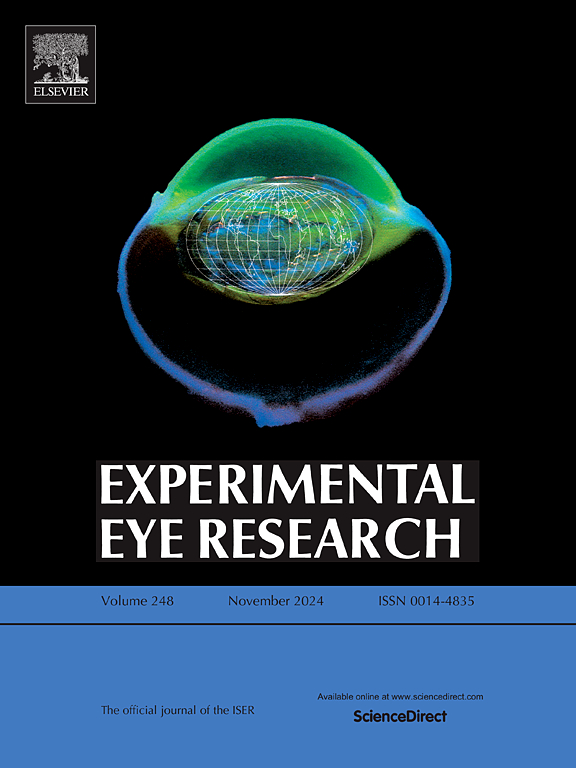Olink蛋白质组学分析揭示糖尿病视网膜病变代谢相关蛋白生物标志物。
IF 3
2区 医学
Q1 OPHTHALMOLOGY
引用次数: 0
摘要
糖尿病视网膜病变(DR)是导致工作年龄成年人视力丧失的主要原因,是糖尿病的微血管并发症,与代谢失调有关。本研究采用Olink蛋白组学分析方法鉴定新的生物标志物,阐明DR的潜在机制,共纳入44例DR患者和44例白内障患者作为对照。使用Olink®Metabolism Panel对所有参与者的房水样品进行92种代谢相关蛋白的分析。差异表达分析鉴定出两组之间有78个蛋白表达改变。基因本体(GO)和京都基因与基因组百科全书(KEGG)对差异表达蛋白的分析显示,富集的途径主要与血管发育、细胞信号传导和蛋白质降解有关。值得注意的是,在受试者工作特征(ROC)分析中,TFF2表现出特殊的DR诊断潜力,曲线下面积(AUC)为0.9974。在DR患者和链脲佐菌素(STZ)诱导的糖尿病小鼠模型中进一步验证了TFF2水平升高。功能实验显示,TFF2在体外参与内皮血管生成,在体内参与视网膜血管功能障碍。这些发现强调了TFF2作为DR诊断生物标志物的潜力,并为驱动DR发病机制的代谢途径提供了新的见解。本文章由计算机程序翻译,如有差异,请以英文原文为准。
Olink proteomics profiling reveals metabolism-related protein biomarkers in diabetic retinopathy
Diabetic retinopathy (DR) represents a microvascular complication of diabetes mellitus that is associated with metabolic dysregulation. This study employed Olink proteomics profiling to identify novel biomarkers and elucidate the potential mechanism of DR. A total of 44 patients with DR and 44 individuals with cataracts serving as controls were enrolled in the study. Aqueous humor samples from all participants were analyzed for 92 metabolism-related proteins using the Olink® Metabolism Panel. Differential expression analysis identified 78 proteins with altered expression between the two groups. Gene Ontology (GO) and Kyoto Encyclopedia of Genes and Genomes (KEGG) analysis of differentially expressed proteins revealed that the enriched pathways were primarily associated with blood vessel development, cellular signaling, and protein degradation. Notably, TFF2 exhibited exceptional diagnostic potential for DR with an area under the curve (AUC) of 0.9974 in receiver operating characteristic (ROC) analysis. Elevated TFF2 levels were further validated in both DR patients and a streptozotocin (STZ)-induced diabetic murine model. Functional experiments revealed that TFF2 contributed to endothelial angiogenic effects in vitro and retinal vascular dysfunction in vivo. These findings underscore the potential of TFF2 as a diagnostic biomarker for DR and offer new insights into the metabolic pathways driving DR pathogenesis.
求助全文
通过发布文献求助,成功后即可免费获取论文全文。
去求助
来源期刊

Experimental eye research
医学-眼科学
CiteScore
6.80
自引率
5.90%
发文量
323
审稿时长
66 days
期刊介绍:
The primary goal of Experimental Eye Research is to publish original research papers on all aspects of experimental biology of the eye and ocular tissues that seek to define the mechanisms of normal function and/or disease. Studies of ocular tissues that encompass the disciplines of cell biology, developmental biology, genetics, molecular biology, physiology, biochemistry, biophysics, immunology or microbiology are most welcomed. Manuscripts that are purely clinical or in a surgical area of ophthalmology are not appropriate for submission to Experimental Eye Research and if received will be returned without review.
 求助内容:
求助内容: 应助结果提醒方式:
应助结果提醒方式:


